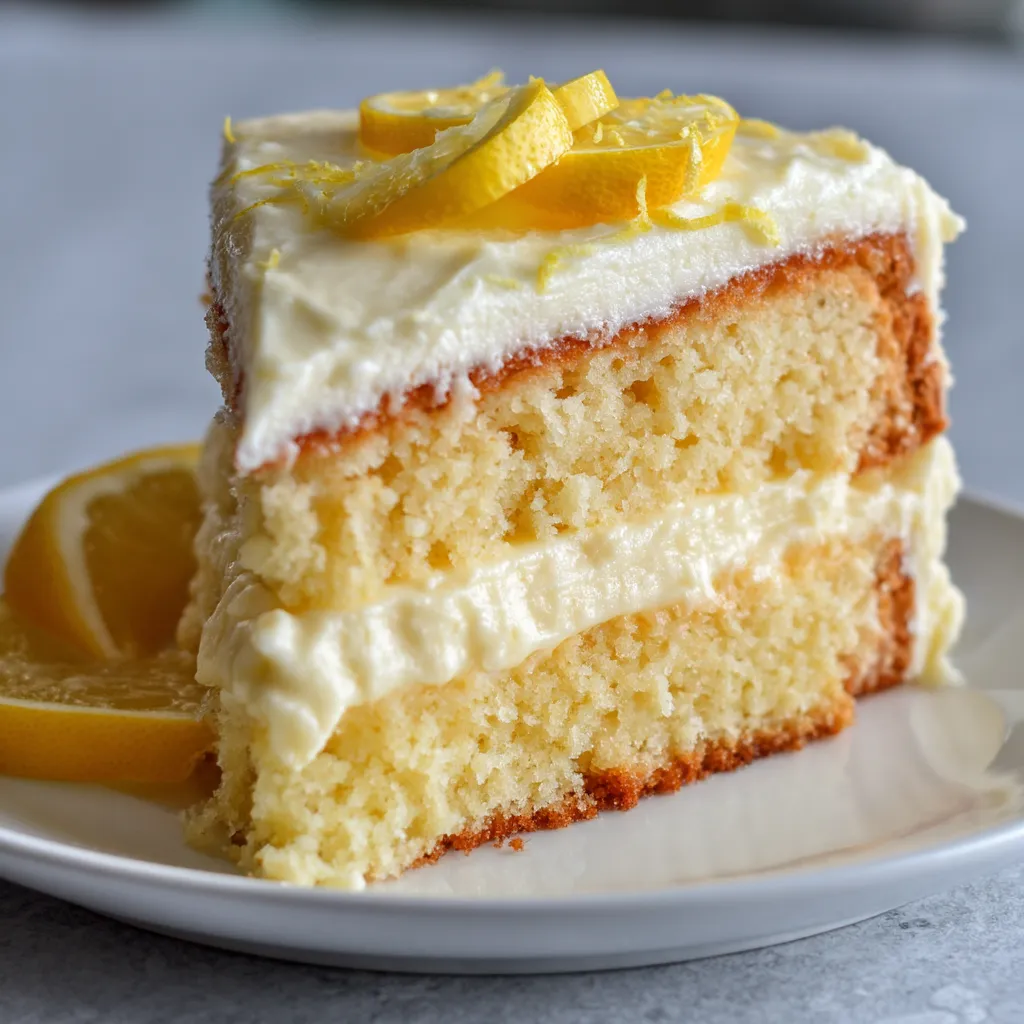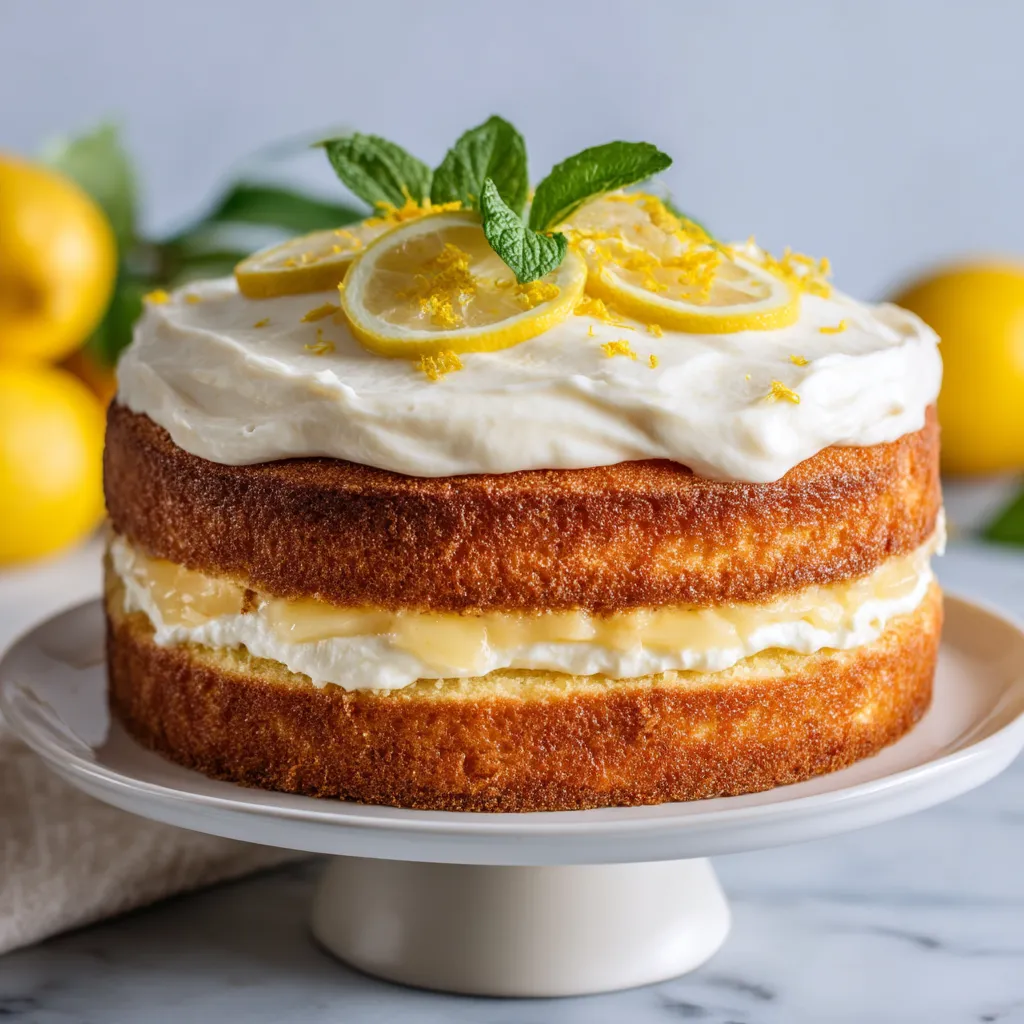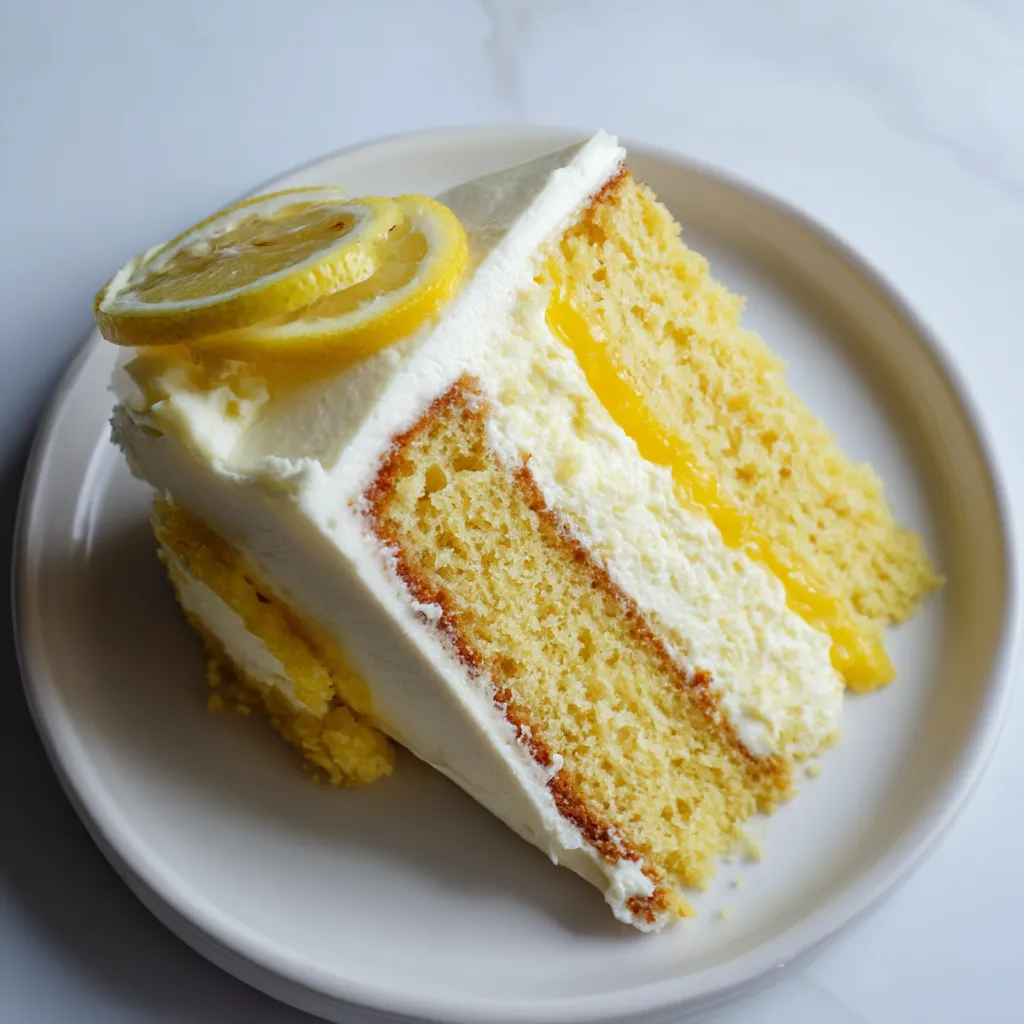 Mark
Mark
This lemon cheesecake cake combines the bright, zesty flavor of lemon with the creamy richness of cheesecake, all sandwiched between two layers of moist buttermilk cake. It's the perfect show-stopping dessert for special occasions when you want to impress your guests with something both elegant and indulgent.
I first made this cake for my sister's summer garden party, and it quickly became the most requested dessert in our family. The contrast between the dense cheesecake and fluffy cake layers creates a texture that keeps everyone coming back for seconds.
Ingredients
- Cream Cheese: Provides the rich, tangy base that makes this layer so indulgent. Always use full-fat for the best texture and flavor.
- Sugar: Sweetens the cheesecake without overpowering the lemony notes.
- Eggs: Bind everything together and provide structure to your cheesecake.
- Sour Cream: Adds moisture and a subtle tang that complements the lemon beautifully.
- Lemon Extract: Gives that concentrated citrus flavor without adding extra liquid.
- Buttermilk: Creates an incredibly tender crumb and adds a slight tanginess.
- Lemon Juice and Zest: Provide both bright flavor and natural acidity that activates the leavening agents.
- Cake Flour: Results in a lighter texture than all-purpose flour would give you.
- Butter: Provides richness and helps create that melt-in-your-mouth quality.
- Vegetable Oil: Keeps the cake moist even after refrigeration.
- Cream Cheese: Gives the frosting body and that signature tangy flavor.
- Butter: Creates a smooth, spreadable texture and rich mouthfeel.
- Lemon Extract: Enhances the citrus flavor throughout the entire cake.
- Powdered Sugar: Provides sweetness and the right consistency for frosting.
Step-by-Step Instructions
- Prepare the Cheesecake Layer:
- Begin with a water bath setup by placing a water-filled pan in the oven and preheating to 300°F. This critical step creates steam that prevents cracks in your cheesecake. While the oven heats, beat your cream cheese until absolutely smooth before adding any other ingredients. Any lumps now will remain in the final product.
- Create the Perfect Batter:
- Mix your sugar, salt and flour into the cream cheese gradually, keeping your mixer at low speed to prevent incorporating too much air which can cause cracks. Add the lemon extract and sour cream, making sure everything is fully incorporated before introducing the eggs one at a time. The mixture should be silky smooth before pouring into your parchment-lined springform pan.
- Bake with Care:
- Place your filled pan on the rack above the water bath and bake for exactly 45 minutes. The center should still have a slight jiggle. Turn off the oven but leave the cheesecake inside with the door cracked open for 30 minutes. This gradual cooling prevents the dramatic temperature change that causes cheesecakes to crack and sink.
- Prepare the Cake Layers:
- While the cheesecake chills, make your lemon cake layers. The key here is properly creaming the butter and sugar until truly light and fluffy which takes a full 3-5 minutes. This creates air pockets that give your cake its tender texture. Add eggs one at a time, allowing each to fully incorporate before adding the next.
- Mix with Precision:
- Alternate adding your dry ingredients and buttermilk mixture, starting and ending with flour. This method prevents overmixing and keeps your cake tender. Divide the batter evenly between pans and bake until a toothpick comes out clean, about 20-24 minutes.
- Create Luscious Frosting:
- For the frosting, ensure your butter is cool but malleable and beat until smooth before adding cream cheese. Always add cream cheese after the butter is smooth to prevent lumps. The lemon extract and zest add brightness, while gradually adding powdered sugar helps you control the consistency.
- Assemble with Care:
- Place your first cake layer on a serving plate and spread with a thin layer of frosting. Remove the chilled cheesecake from its springform pan and carefully place it upside down on the frosted cake layer. Add another thin layer of frosting before topping with the second cake layer. If at any point your frosting becomes too soft, chill everything for 15 minutes before continuing.

You Must Know
This cake serves 12 generous portions, perfect for gatherings The different textures create an elevated dessert experience beyond ordinary layer cakes Can be made a day ahead making it perfect for entertaining
The cheesecake layer is honestly what makes this cake spectacular. I discovered that freezing it briefly before assembly makes handling much easier and prevents any breakage when transferring it onto the cake. My grandmother always said a good cheesecake needs time to develop flavor, and she was right this cake tastes even better the day after baking.
Make-Ahead Tips
This lemon cheesecake cake actually tastes better when made ahead of time. The flavors have time to meld and intensify, making this the perfect dessert for planning ahead. You can make the cheesecake layer up to three days in advance and keep it refrigerated or even freeze it for up to a month. The cake layers can be baked a day ahead and wrapped tightly in plastic wrap at room temperature. Even the frosting can be made in advance and refrigerated. Just bring it back to spreadable consistency by letting it warm slightly and rebeating before using.
Troubleshooting Common Issues
Sometimes cheesecake can be intimidating, but this recipe is forgiving if you know what to watch for. If your cheesecake cracks, don't worry since it will be hidden between cake layers. A common issue is overbaking the cake layers, which results in dryness. Always test for doneness a minute or two before the suggested baking time. If your frosting seems too soft, refrigerate it for 15-20 minutes before using. And if your finished cake starts to lean, insert a skewer through all three layers for stability, then refrigerate for at least an hour before serving.
Serving Suggestions
This showstopper dessert deserves a beautiful presentation. Serve chilled slices on white plates with a light dusting of powdered sugar and fresh berries for color contrast. A small dollop of lightly sweetened whipped cream and a sprig of mint adds an elegant touch. For an extra special presentation, place edible flowers like violets or pansies around the base of the cake before serving. This cake pairs wonderfully with coffee, tea, or even a dessert wine like Moscato d'Asti for special occasions.
The History Behind the Layers
The combination of cheesecake and traditional cake layers has roots in both Eastern European and American baking traditions. In the 1970s, restaurants began experimenting with 'impossible' desserts that combined multiple textures and techniques. This style of layered dessert gained enormous popularity in the 1990s when bakeries began showcasing these elaborate creations in their display cases. The addition of lemon brightens the traditionally heavy dessert, making it perfect for year-round enjoyment rather than just wintertime celebrations. Many Southern bakers have embraced lemon desserts as a signature offering, particularly for spring and summer gatherings.

Questions About Recipes
- → Can I make the components of this cake ahead of time?
Yes! The cheesecake layer can be made 1-2 days ahead and kept refrigerated. The cake layers can be baked a day ahead, wrapped tightly, and stored at room temperature. The frosting can also be made ahead and refrigerated, but bring to room temperature before frosting the cake.
- → How should I store leftover lemon cheesecake cake?
Store any leftover cake in the refrigerator, covered or in an airtight container, for up to 5 days. Let slices sit at room temperature for about 20 minutes before serving for the best texture and flavor.
- → Can I freeze this lemon cheesecake cake?
Yes, you can freeze the assembled cake or individual slices. Wrap well in plastic wrap and then aluminum foil or place in an airtight container. Freeze for up to 2 months. Thaw overnight in the refrigerator before serving.
- → What's the purpose of the water bath when baking the cheesecake layer?
The water bath creates a humid environment that helps the cheesecake bake evenly without cracking. It's an important step for achieving that perfectly smooth cheesecake texture.
- → Can I substitute the lemon extract with something else?
Yes, you can use fresh lemon juice and additional zest, though the flavor may be slightly less concentrated. For each teaspoon of lemon extract, use about 2 tablespoons of lemon juice and an extra teaspoon of zest.
- → Why is my cream cheese frosting too soft?
Cream cheese frosting can become soft if the ingredients are too warm or if not enough powdered sugar was added. If your frosting is too soft, refrigerate it for 15-30 minutes before continuing to frost the cake. You can also add more powdered sugar to stiffen it.
